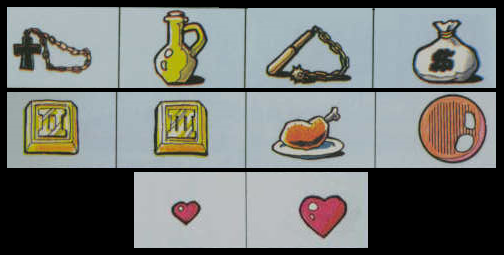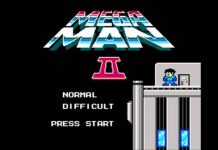As I mentioned in our first reTROview, gamers of the 1980’s were very different from the gamers of today. The frustratingly difficult levels of the past, for the most part, no longer exist in the same way today. With gameplay that can be extended anywhere from 75 to even 100 hours thanks to the technology of multilayered digital Blu-Ray discs, it is no longer necessary for developers to synthetically increase the difficulty of their games to make them appear to last longer. Castlevania, admittedly, has only approximately 30-35 minutes of overall gameplay, but this was expanded upon by several hours due to the overall hardship of the game. That is unless you’re Aleksi “Bablo” Kanerva who set the world record speed run on March 2nd, 2010 by completing Castlevania in 12 minutes and 21 seconds! Since I am obviously not “Bablo,” I struggled through in my own time.
Unlike Mario, players couldn’t just charge through Castlevania’s stages without a thought. They had to plan their approach carefully, being mindful of their timing, the enemy’s placement, and when to strike. Stages 1 to 3, in retrospect, were not all that hard. Yet, the very first boss, the Vampire Bat…well, I’m not ashamed to say that he schooled me the first three times I took him on until I eventually figured out the proper way to beat him. Thank you Konami for giving us unlimited continues!
The first stage is where players learn how to control Simon and find out what he’s equipped with. His mobility is something that players have to get used to immediately because the very first enemy encountered is a zombie horde (naturally). Simon can move left and right, duck, and jump. His jumps leave him incredibly vulnerable to the many well placed pit falls, not to mention that taking a hit while in mid-air causes the player to plummet to the ground without the ability to change direction. This is exacerbated by the knock-back caused by each hit taken. Skilled players can use said knock-back to move quickly through the stages; however, this requires perfect timing.
Speaking of timing, it applies to more than just moving from platform to platform and dodging enemies. When players press the whip button, there’s a slight delay before Simon actually cracks his leather across a foe’s face. There’s even a nifty animation that shows him winding up as he strikes, which adds maybe half a second to each attack. Now players not only had to worry about positioning, but also ensuring that they timed each strike perfectly to guarantee that when they reached that new platform they wouldn’t immediately be knocked back off and down a pit.
At first, Simon only has the leather whip, but he quickly receives an upgrade to the chain whip, which increases damage, and then again to the morning star, which doubles the length and increases the damage again. If the player dies, they lose the upgrades, but these can quickly be recovered by breaking the multitude of candles throughout the castle. Who knew that candles of all things could hold so much hidden treasure?

Most enemies could be dispatched with a single strike from Simon’s whip, but as the stages grew more difficult, the enemies grew more resilient accordingly and took more and more hits to kill. The upgrades kept the playing field somewhat even, but god forbid you died during a boss fight! Having to tackle one of the big-bads with the leather whip was NOT fun!
In addition to the whip upgrades, candles also drop money bags, rosaries, invisibility potions, hearts, or sub-weapons. Each item has various uses while sub-weapons offer a new attack. Money bags raise a player’s points (red is worth $100, blue is worth $400, white is worth $700, and flashing is worth $1,000), crosses kill all enemies visible on the screen (though bosses are immune), and invisibility potions offer a few seconds of invulnerability. Unlike many games, hearts do not equate to health, but rather are sort of a casting cost to use a sub-weapon. Small hearts are equal to one, while large hearts give you five.
The sub-weapons add a new way to dispatch enemies and are a major asset during a boss fight. The knife is a fast moving projectile thrown across the screen, the axe is thrown in an upward arc, the stopwatch freezes all enemies on screen for a short time, the fire bomb is a type of grenade, and the boomerang flies out to strike the enemy several times before returning to Simon.
Let’s hold up here for a minute to clarify a couple of things with the sub-weapons. Due to religious censorship in the early gaming world, the names of several items were changed. For instance, the fire bomb? Since when do fire bombs look blue? This was really a bottle of Holy Water that when shattered would ignite an enemy in a bath of holy fire. The boomerang was originally known as the cross (or combat cross in most recent games). Oddly, the cross was originally known as a rosary, which is kind of the same thing, so what was the point of the name change?



























